 |
Agni the the Hindu diety one among the chief of Gods is popularly known as the God of fire and also the acceptor of sacrifices. |
|
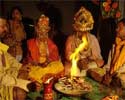 |
The most important part of any Hindu wedding is the homage paid by the couple to the Fire God, Agni. |
|
 |
Angapradashinam is one of the most sacred rituals followed by the Hindus in India. |
|
 |
Anklets known as kolusu in Tamil and ghungru in Hindi have lot of significance behind its usage.. |
|
 |
Children's rights groups have put an end to the practice of Baby tossing ritual held in some parts of India. |
|
 |
Plantain or the Banana tree is known for its eternal evergreen factor thereby signifying an endless generation. |
|
 |
A traditional Bengali Wedding is generally arranged by matchmakers who are popularly known as Ghotoks. |
|
 |
Betel leaves along with areca nuts symbolize love and marriage. |
|
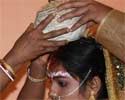 |
The balancing of earthen pots by the bride is a very interesting post wedding ritual in Bihari marriages. |
|
 |
The Bilva tree is considered to be a very sacred tree in Hinduism because of its sacrificial importance. |
|
 |
The conchs are also known as chank shell and it is a significant object in all the rituals performed by the Hindus. |
|
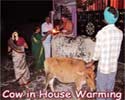 |
The bringing of cow into a newly built house is also known as Govardhana pooja. |
|
 |
The idol in the sanctum is always said to be very powerful and is manifested with positive energy. |
|
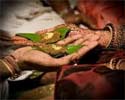 |
Cumin seeds and jaggery play a major role in Hindu weddings which is made into a paste. |
|
 |
Namaste literally means- I bow to you my greetings, obeisance or prostration to you. |
|
 |
The scientific name of the durva grass is Agrostis linearis.This grass is considered to be very sacred in Hinduism. |
|
 |
Karnavedha is the practice of the piercing of the ears and it is one of the important Hindu Samskaras or spiritual ceremony. |
|
 |
According to Hinduism fasting is the act of saying no to the physical requirements of the body in order to attain spiritual power. |
|
 |
According to the Hindu religion, there is a belief that the ancestors come in the form of crows. |
|
 |
The ritual of walking on the fire is also popularly known as Theemithi which is celebrated as an international Hindu festival. |
|
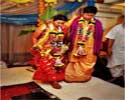 |
It is a customary ritual among the Hindus where at the time of wedding the married couples go round the fire. |
|
 |
The ceremony of placing the brides feet on the grinding stone is a very important ceremony in the Hindu weddings. |
|
 |
Vibhuti is also known by other names like Bhasma and Holy ash. The Sanskrit meaning for the word Vibhuti means glory. |
|
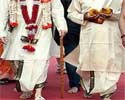 |
This ancient practice of Kasi Yaatrai is not only followed by the Brahmin community but by others as well in India. |
|
 |
The people of Himachal Pradesh are generally known as Kumaonis and their unique marriage ceremonies are a sight to behold. |
|
 |
Light and darkness the contrasting features symbolize two different factors namely the former indicates knowledge. |
|
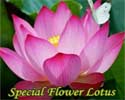 |
The lotus flower signifies purity in one's spirit for even when it is grown in the dirtiest water. |
|
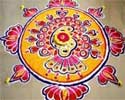 |
There are lots of reasons behind the science of making rangoli at the entrance of the house. |
|
 |
The mango tree is considered to be one among the most sacred trees and a sacred symbol of Hinduism. |
|
 |
The Hindus follow the traditional custom of wearing toe ring more popularly known as metti. |
|
 |
Navrathri the most significant festival of the Hindus falls on the lunar month of Ashwin which is in September/October. |
|
 |
Neem tree is one of the widely grown tree in almost all parts of India. It has medicinal properties attached. |
|
 |
The coconut is considered to be the most satvic fruit and the most purest form of fruit. |
|
 |
Most of the Hindus follow the practice of offering food to God before they eat it. |
|
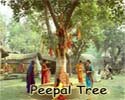 |
Scientifically known as Ficus religious, the peepal tree has its mention even in the ancient Indus Valley civilization . |
|
 |
The concept of offering Aarti is said to have originated from the fire rituals or homa of Vedic period. |
|
 |
Almost all the Hindu houses are said to have a prayer room and are much pre-planned and built during the construction. |
|
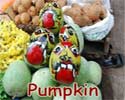 |
The main reason behind tying a pumpkin at the entrance of the house is to nullify the effect of the evil eyes. |
|
 |
The tying of the Rakhi denotes the love between a brother and a sister and has more significance in India.. |
|
 |
It is a custom in Hinduism to remove the footwear outside the sacred temple premises. |
|
 |
The Sanskrit word for bell is Ghanta/Ghanti which is mainly used at time of poojas for invoking the Gods. |
|
 |
The significance behind the performance of the Sapta padi ritual is that the bride and the groom take few vows. |
|
 |
Self flagellation is a ritual or the action of flogging oneself, especially as a form of religious discipline. |
|
 |
The more common term for the word Shanthi is peace which is nothing but the natural state of us. |
|
 |
According to Hinduism food is considered to be one of the most vital things which are said to be a part of God. |
|
 |
The word Thirunamam in Sanskrit means- "Thiru" stands for sacredness and "namam" stands for name. |
|
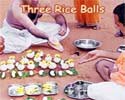 |
The ceremony of Shraddha is a Hindu ritual and the Sanskrit meaning of it is homage pay to the ancestors. |
|
 |
The concept of evil eye is a widespread one which is been believed by Indians from time immemorial. |
|
 |
Tongue piercing is done in some parts of India during temple festivals as a tribute to the Gods . |
|
 |
In Indian weddings people follow various customs and one such ritual is the tossing of rice on the married couple. |
|
 |
There is no religious significance behind the touching of the elders feet by the youngsters but it signifies respect. |
|
 |
The worship of Tulasi is still continued by the Indians which are a part of Vedic tradition. |
|
 |
Turmeric and sugar cane are mainly used at the celebration of Pongal festivals. |
|
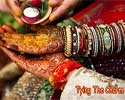 |
The tying of charm is again a very important ritual performed at time of Indian weddings. |
|
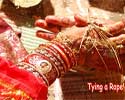 |
Usually in Hindu weddings a rope or a string kind of grass is tied in the hand of the bride and the groom. |
|
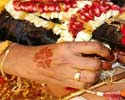 |
Mangalayam Dharanam is one of the most essential parts of Hindu weddings. |
|
 |
Vidaai is another important custom which takes place after the wedding ceremony . |
|
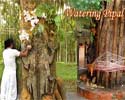 |
In India watering of Banyan trees in the vicinity of temples is followed by womenfolk who pray for progeny. . |
|
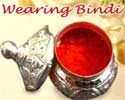 |
The people of South East Asian countries are very much attached to the concept of Bindi. |



 Indian Folklores
Indian Folklores